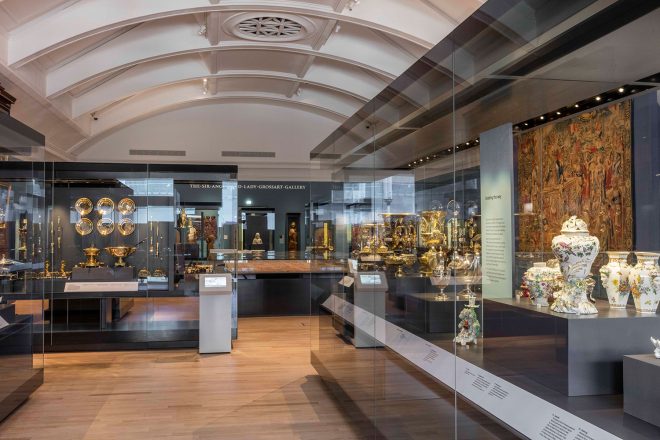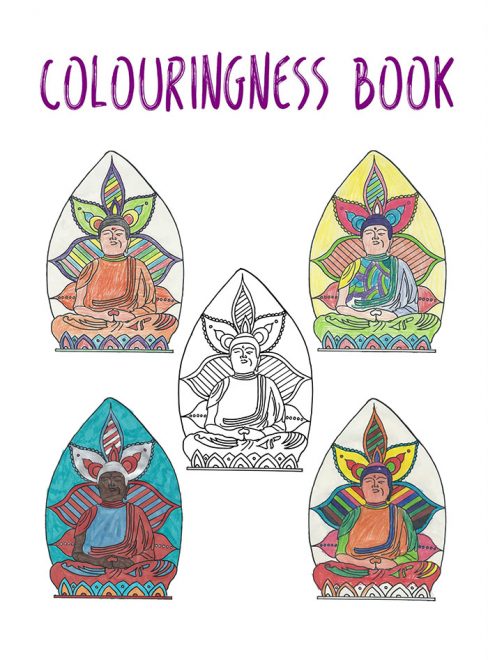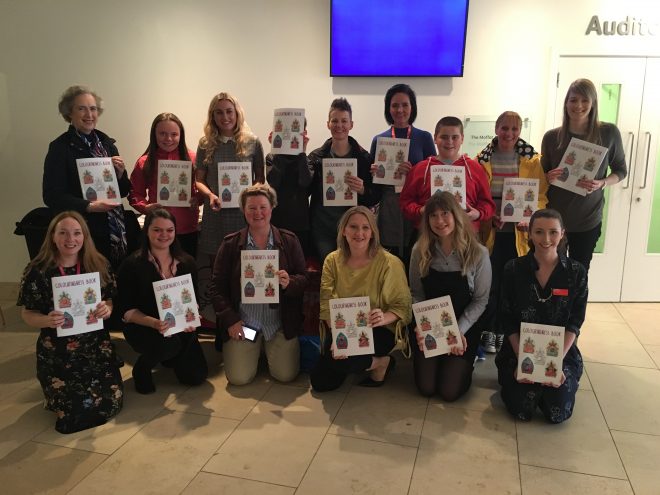Have you ever wandered round the museum, found something you love and spent a few moments tracing patterns, shapes and colours with your eyes, or other senses? How does it make you feel afterwards?

This is kind of how mindfulness works – something you might have heard of but perhaps don’t know much about. Rooted in the practice of meditation, mindfulness is a way to train your busy mind to focus on the here and now, enabling your brain to focus on a subject or the sensations in your body and mind without comment or judgement. It’s not about controlling or suppressing your thoughts, or about emptying your mind, but about noticing them, and then letting them go.
The argument, and it’s a pretty powerful one, is that this is good for your mind and your body, as it allows the stresses of the day to pass through you, letting go of anxieties. An overload of stress is not good for the body – we know that. A testament to the importance of this approach is that many core NHS services are working with mindfulness practitioners on a regular basis to support individuals who might benefit from this approach. But we can all do with a bit of stress relief in this busy, challenging digital world we live in, right?
After a visit to the Manchester Museum and Art Gallery and their Health and Well-being team to learn about their programming around mindfulness and health and well-being, I became inspired to try out some mindful techniques back at the National Museum of Scotland, using our collections as a focus.
Through a contact with the Children and Adolescent Mental Health Service (CAMHS) in Edinburgh, I was put in touch with their mindfulness practitioner Kirsten Davenport, who kindly volunteered her time to support this venture. She was excited about the prospect of using the Museum for mindfulness, and we discussed how it was a fantastic place for people suffering from a sense of isolation or mental health issues because it helps foster connections through objects to other times, cultures and places. The Museum is also a more neutral, non-clinical space which can help people’s recovery in the wider world.
The result of this collaboration was a pilot mindful tour round the galleries with National Museums Scotland staff. Mindfulness is not for everyone, and I know that there were some who felt a bit awkward ‘mindfully’ walking round the busy galleries in a group – but some found the session of benefit. Learning Enabler Helyn Long said:
“The session was lovely and I really liked the calm, slow pace of it. I liked sitting on the bench where we weren’t looking at anything in particular and just enjoying the space around us.”
I have also recently supported an amazing new initiative working with the ADHD (Attention Deficit and Hyperactivity Disorder) CAMHS team, supported and funded by the Edinburgh Children’s Hospital Charity. The project was to create a mindfulness colouring-in book with and for children and young people with ADHD, using museum objects as a focus to support them in learning about mindfulness techniques, and how they can help to manage ADHD core symptoms such as inattention, impulsivity and hyperactivity.
Four young people visited the museum for two workshop sessions to choose, record and recreate in different media – sculpture, large-scale drawing and 3-D printing pens – their selected objects. At CAMHS they attended a series of three workshops – each session focused on ADHD core symptoms, mindfulness techniques and how to practise them.
The book is a result of all the young people’s hard work, and they chose to call it the Colouringness Book. It takes you on a trail around the Museum using the artwork of their chosen objects as a focus for mindful activities. A written description and audio track (kindly contributed by local radio DJ and actor Grant Stott) guides you through these mindful techniques as you go.

The book was launched at the museum in September, and is a free resource for all CAMHS patients to access. It was such a fantastic project to be involved with and a great way for me to learn more about the important work CAMHS does, how mindfulness can support people, and also how we can collaborate with others to use the museum and its objects in this new way. I’ve no doubt the book will be of great use to many CAMHS children and young people.

To learn more about the project please contact Fiona O’Sullivan, Arts Programme Manager fiona.osullivan@echcharity.org.

